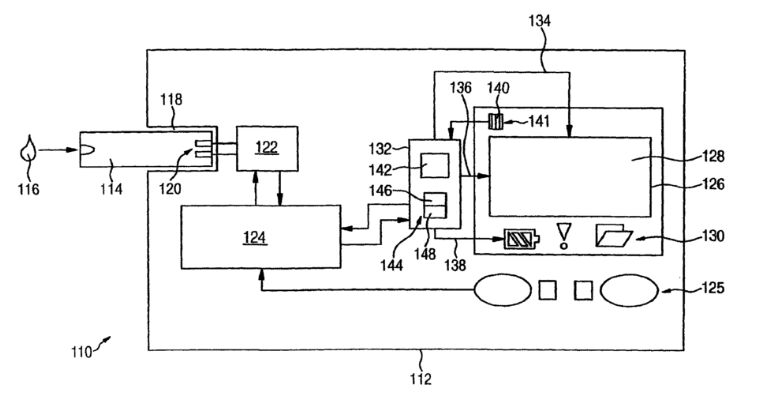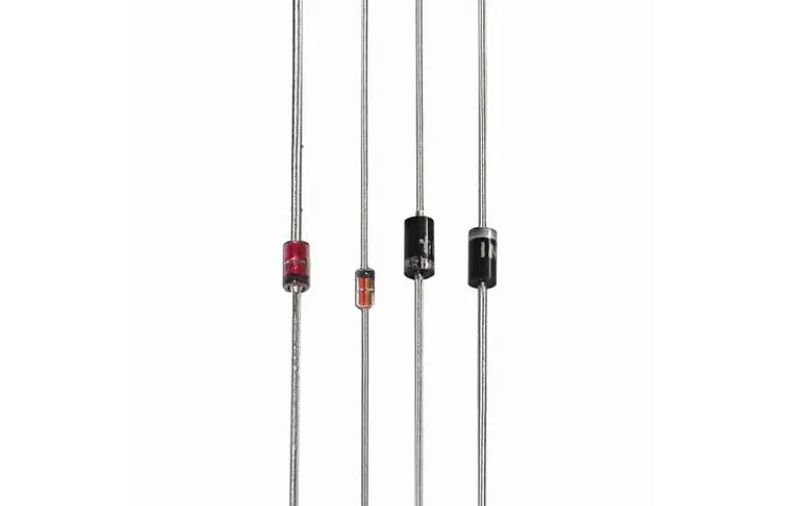By ON Semiconductor 140
A diode is a two-terminal electronic device with asymmetric conductance and is made from a group of semiconductor materials, usually materials such as silicon or selenium. Diodes make it possible in principle to allow current to conduct in one direction only, it is low resistance (ideally zero) in one direction, high current, and high resistance in the other direction.PIN Diodes

A diode has two electrodes, a positive pole (anode) and a negative pole (cathode). When a forward voltage is applied between the two poles of the diode, the diode is turned on, and when a reverse voltage is applied, the diode is turned off. The on and off of the diode is equivalent to the on and off of the switch.
One of the main applications of diodes is rectification, which is the conversion of alternating current to direct current. In this case, the diodes are connected in the circuit so that current can only flow in one direction. Diodes are also widely used in applications such as circuit protection, signal modulation and demodulation, and voltage stabilization.diodes kitfs
Ⅰ. Forward bias and reverse bias of diode
1. Forward bias: A positive voltage is applied to the anode side of the diode, and a negative voltage is applied to the cathode side. This is called forward bias, and the applied voltage is forward bias. In the forward biased state, the forward current of the diode can flow because the anode voltage provides enough potential energy to overcome the forward voltage drop of the diode.diodes and transistors
2. Reverse bias: Applying a negative voltage on the anode side relative to the cathode is reverse bias, and the applied voltage is reverse bias. In the reverse biased state, the forward current of the diode is very small, close to zero. This is because under reverse bias, the forward voltage drop of the diode increases, so that the potential energy is not enough to overcome the obstacles of the forward voltage drop, thereby preventing the flow of current.
Ⅱ. The structure and composition of the diode
The diode is packaged by the PN junction plus the corresponding electrode leads and the shell. The structure formed by the direct contact of P-type semiconductor (positive doping) and N-type semiconductor (negative doping) is called PN junction. P and N represent positive and negative charges in semiconductor materials, respectively. The PN junction is the basic building block of a diode.
Since the P-type region and the N-type region have different carrier concentrations (holes and electrons), when the PN junction is formed, the electrons and holes will diffuse and move from the high-concentration region to the low-concentration region. This causes the PN junction to form a built-in electric field, which will further suppress the diffusion of carriers.
Ⅲ. Function of Diode
1. Temperature compensation: The voltage-temperature characteristic of the diode can be used for temperature measurement and compensation.
2. Photoelectric conversion
3. Rectification: One of the most common functions of diodes is to convert alternating current to direct current. By connecting the diode to the AC power source, it only allows the current to pass in one direction, blocks the negative half cycle of the AC signal, and only conducts the positive half cycle, realizing the unidirectional flow of current.
4. Voltage detection and protection: Diodes can be used for voltage detection and protection circuits. Diodes can be connected in circuits to prevent reverse voltages from exceeding a certain threshold, thus protecting subsequent electronic components.
5. Circuit protection: Diodes can be used for over-current protection and over-voltage protection in circuits. In some circuits, diodes can be used as a protection device to prevent current or voltage from exceeding a set safe range.
Ⅳ. Classification of Diodes
1. Zener tube: Zener tube is a special surface-contact semiconductor silicon diode, which has the function of stabilizing voltage. Zener diodes are different from ordinary diodes. Its reverse breakdown is reversible. As long as it does not exceed the allowable value of the Zener tube current, the PN junction will not be overheated and damaged. When the external reverse voltage is removed, the Zener tube will recover. The original performance, so the Zener tube has good repeated breakdown characteristics.
2. Planar diode: The PN junction area is small when used as a switch tube in a pulse digital circuit, and the PN junction area is larger when used for high-power rectification.
3. Point contact diode
4. Surface contact diode: The PN junction of the surface contact diode has a large contact area, which can pass a large current and withstand a high reverse voltage, and is suitable for use in rectifier circuits.
5. Photodiode: Photodiode is also called photosensitive diode. Its shell is equipped with a glass window to receive light. When there is no light, the volt-ampere characteristics of photodiodes are the same as ordinary diodes. As a light control element, photodiode can be used in various object detection, photoelectric control, automatic alarm and so on. When made into a large-area photodiode, it can be used as an energy source and called a photocell.
6. Light-emitting diode: Light-emitting diode is a semiconductor solid-state display device that directly converts electrical energy into light energy, referred to as LED. Similar to ordinary diodes, LEDs are also made of a PN structure. The PN junction of the light-emitting diode is packaged in a transparent plastic case, and the shape is square, rectangular and circular.
Ⅴ. Main applications of diodes
The use of semiconductor diodes in the circuit can protect the circuit and prolong the life of the circuit. The development of semiconductor diodes has made integrated circuits more optimized and has played a positive role in various fields.
1. Electronic circuit application: limiter circuit, switch circuit, varactor circuit, voltage regulator circuit
2. Industrial product applications: decorative lights in cities, applications in automobiles and large machinery, applications in electronic products, and applications in coal mines

Frequently Asked Questions
1. How does a diode allow current to pass in only one direction?
A PN junction consists of a direct contact between a P-type semiconductor and an N-type semiconductor. Incorporation of impurity atoms in P-type semiconductors creates holes (positive charges), while incorporation of impurity atoms in N-type semiconductors creates free electrons (negative charges). When the P-type and N-type semiconductors are in contact, due to the difference in the concentration of electrons and holes, a built-in electric field will be formed to prevent the diffusion of free electrons and holes. When the diode is in a forward biased state, that is, the anode of the P region is connected to the anode of the power supply, and the cathode of the N region is connected to the cathode of the power supply, forward current can flow through the diode. In this case, the applied voltage will offset the built-in electric field inside the PN junction, reducing the barrier height of the PN junction, so that free electrons and holes can combine with a greater probability and pass through the diode.
2. What is a Light Emitting Diode (LED)? How does it shine?
A light-emitting diode is a semiconductor device that can directly convert electrical energy into light energy to achieve a luminous effect. The principle of light emission is based on the electronic energy level structure of semiconductor materials and the recombination process of electrons and holes. When a forward voltage is applied to the PN junction of the LED, electrons diffuse from the N-type region to the P-type region, while holes diffuse from the P-type region to the N-type region.